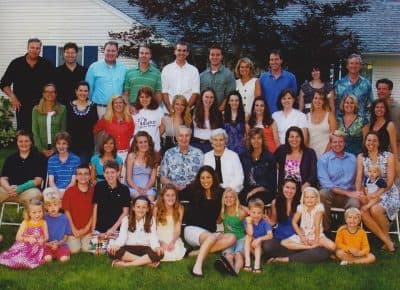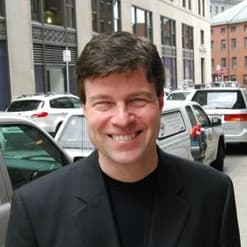Advertisement
Commentary
Accepting Death, Gaining Peace At The End Of My Mother's Life

My mother died last Friday. Jeff Bezos would not have approved.
Bezos, the founder of Amazon, is only one of the many titans of Silicon Valley who have embarked on various well-funded efforts to delay or simply stop death. Their lives are just so important, they think, their value so great, that the world should never be deprived of their genius.
The rest of us may not have the titans’ billions, but in our own ways we have the same hubris, trying to deny the inevitable. I watched that happen as a series of maladies struck my mother and we fought back, trying to hang on even as we knew in our hearts the end was near. But I saw also that there is virtue in sometimes acknowledging reality, of learning to accept.

My mother, Betty Ann, was born in 1930 and led an extraordinary life, bearing witness to the end of the Great Depression, the traumas of World War II, the rise of the middle class in the '50s, the political and cultural shocks of the '60s, the incredibly bad fashions of the '70s, the rise of various liberation movements — from feminism to LGBTQ rights, the dawn of a new century, the advent of computers and the internet and, to her great delight, the inauguration of an African-American president. And she managed to do so while raising 11 children who in turn produced 35 of their own progeny. She was caring, vital, smart, funny and embraced living with relish. She had no desire to die and those who loved her had no desire to see her die either.
But her body had other plans.
As we age, our bodies break down. We see it first in new wrinkles, twinges of the joints, a slowing of movement. But then it accelerates. We become a Jenga puzzle as one block is pulled out, then another, and eventually, even though the structure is still there, we are vulnerable. One more complication is like the removal of that final, critical block. We try to stop it, but the last move sends the whole thing crashing down.
In my mom’s case, she had a dizzying array of medications. For more than two years, there was a round-robin of trips to the hospital, to rehab and then back home. There was a fall, circulatory issues, cellulitis, fluid build-ups, heart issues. Each was addressed in turn by truly competent physicians and nurses. A wound care specialist recommended one course of treatment; her cardiologist another.
There was much living during this time, but towards the end my mother seemed to understand what was happening. She began to rail against the tubes in her arms, the multiple X-rays, the needles in her lungs. It was we, her children, who kept hoping for one more solution, one more fix that would allow her to go home, to return to the independent life she once had. We wanted her around for yet another special occasion — Easter, a wedding, a summer vacation, Thanksgiving.
And then her medical team sat down to tell us the bad news. They weren’t going to be able to cure her. At best, the care they could offer was palliative. Medicine could make her comfortable, yes. But keep her alive for much longer? No. They suggested we move her to a hospice.
Being with my mother, cycling in and out of her room ... sitting together as her breaths grew ever more shallow, gave us the opportunity to see what really mattered, to put away the small stuff that too frequently pushes us apart.
It was a crushing moment. Signing the papers for her discharge felt like signing a death warrant — and indeed, it truly was. On a Friday she was moved to the Stanley Tippett House in Needham. A week later, Good Friday, she was gone.
But during that time at the hospice, we got a gift — three gifts, really.
The first was simply the time to say goodbye, to tell my mother we loved her, to reminisce about her life and our lives, about what had been and what was yet to be.
The second was simply to gather together and renew the bonds of affection among the members of a very, very large clan. Being with my mother, cycling in and out of her room (far too small to accommodate all of us simultaneously), sitting together as her breaths grew ever more shallow, gave us the opportunity to see what really mattered, to put away the small stuff that too frequently pushes us apart.
And the third was acceptance. My mother understood she was dying. Indeed, at the hospice she told her social worker just that, then added, “But I’m not sure my children know.”
We knew, Mom, we knew. It’s just that we had so much wished it weren't true.
